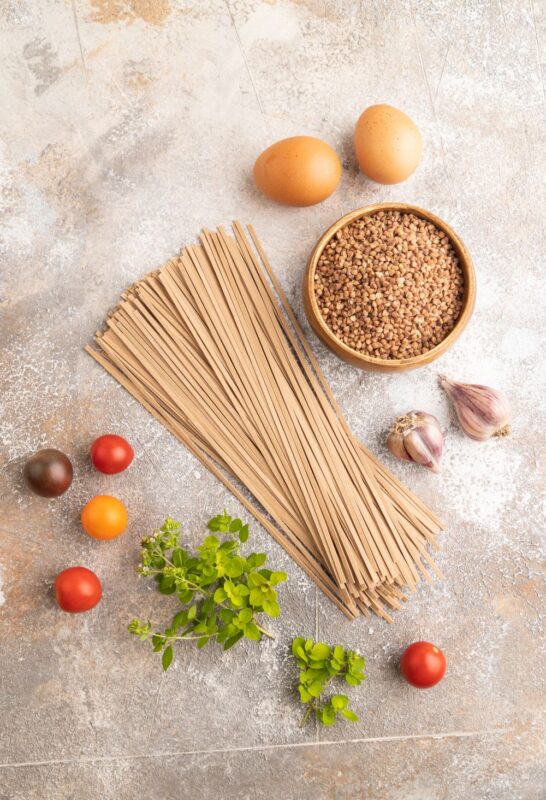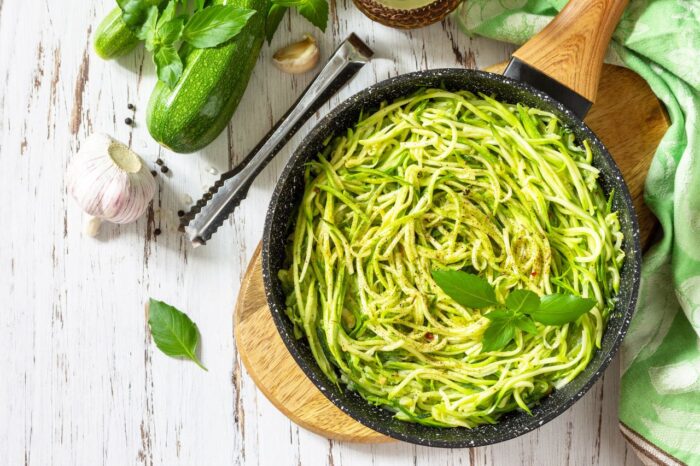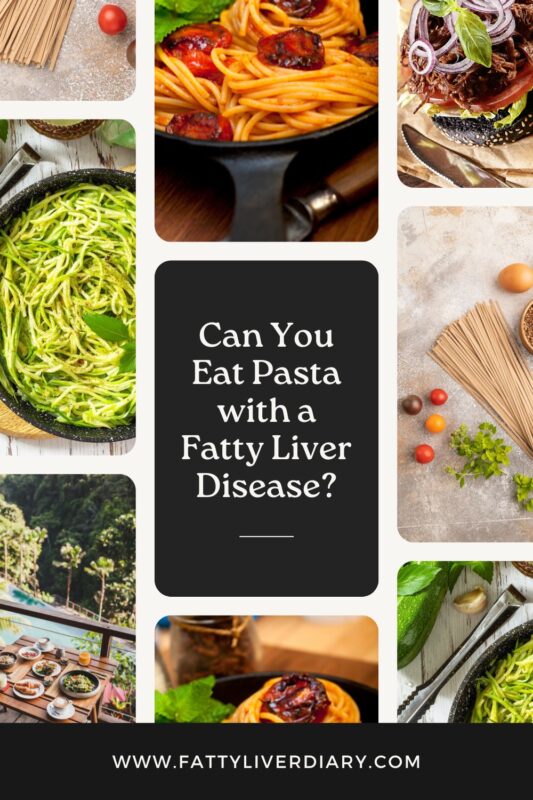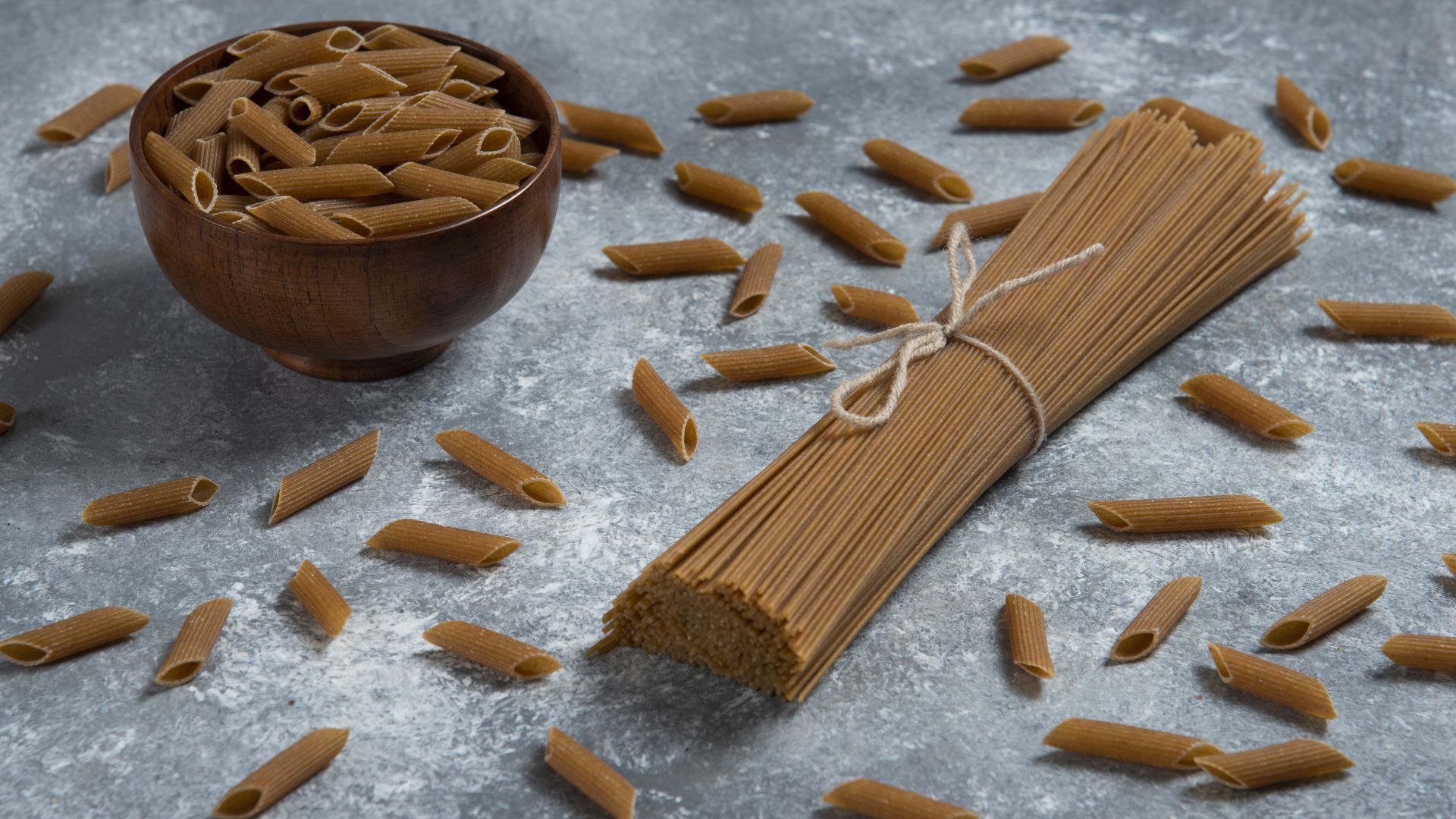If you’re here, you are probably in my situation: you love pasta. But if you’re trying to reverse a fatty liver, you probably know that you should stay away from eating pasta. And you’d be correct!
A cup of cooked pasta usually packs 43 grams of carbohydrates and a modest 1.3 grams of total fat.
To use a famous quote… it’s not great, not terrible. But the catch comes from the fact that nobody eats plain pasta.
And the type of sauce or toppings used can really turn this “OK once in a while” food into one that should always be avoided, just as it is the case of bread and fatty liver.
So, like with most things related to dieting to reverse fatty liver disease, there are some things you should take into consideration if you want to continue eating pasta.
How to eat pasta the right way with a fatty liver
I ate pasta after being diagnosed with a fatty liver disease and still managed to reverse my condition.
But I was very careful about the amount of pasta I had and the other ingredients used when eating it. Also, I only ate it sparingly and in small amounts. Moderation is key when it comes to dieting for reversing your fatty liver!
Always choose whole grain pasta

First of all, I have to say that if you can stay away from eating pasta, this is the best choice. But if you can’t stop, or you don’t want to, having some pasta every now and then is not the end of the world. But make sure you only eat whole wheat or whole grain pasta, if you
Whole-grain pasta is an excellent choice because it contains more fiber than white pasta. Fiber is crucial for a healthy liver because it helps regulate digestion and keeps blood sugar levels stable.
Don’t Overdo It on Portions
All portion sizes – not just pasta – should be kept under control.
Aim for a serving size of about one cup of cooked pasta, and make sure to always pair it with healthy vegetables and, if you really want to, lean protein (more on this below).
You can still have meat as, fortunately for the meat lovers out there, you don’t have to become vegan to reverse your fatty liver.
Toppings and sauces
I’m sorry to say it, but your traditional mac and cheese or meatball toppings and Bolognese are completely out of the question unless you manage to find a very diet-friendly way to prepare them. But it’s best to stay away from them altogether.
So… what to eat your whole grain pasta with?
I was a huge fan of mac and cheese, as well as Bolognese, but I managed to learn relatively fast to appreciate the healthy pasta sauces out there and now I can say I wouldn’t have it any other way.
There are quite a few options for you, mostly mixing tomatoes with various vegetables and spices and, optionally, a tiny bit of extra virgin olive oil, which is my recommended oil type for NAFLD aka MASLD.
The healthy sauces that I recommend are Marinara sauce, Arrabiata, Vegetables and tomato sauce or just keep it simple by adding a bit of EVOO, chopped Kalamata olives, plenty of Basil, and a tablespoon grated Parmesan.
You can try and mix all sorts of vegetables to find your perfect sauce. You can also use broccoli, cauliflower, spinach, or zucchini in various combinations.
The important thing to know is that you should not add sugars or any high-fat products, nor use highly processed ingredients.
Related reading: Cornbread without Cornmeal recipe
Recommended store-brought, healthy pasta sauces
There are some solid store-brought healthy options that you can try – and I am sharing them below, but I recommend preparing your own sauces at home from scratch.
If you can’t, these are only using high quality ingredients and are fatty-liver friendly if consumed in moderation (affiliate links below):
- My favorite, cheap & organic: Marinara, Italian Herbs or Portobello Mushroom.
- If you want it very spicy, try this Arrabiata Sauce.
- Finally, choose a mix of vegetables with this tasty Vegetables & tomatoes pasta sauce or this one if you prefer organic.
Best pasta alternatives

There are some yummy alternatives to pasta – much healthier than even than the whole-wheat ones, mainly because they offer a lot less in terms of carbs.
The offer is varied and I have tried most of these with more or less success. Some do taste like “real” pasta, but most don’t. However, once you add the sauces, you can barely tell the difference. Here are your options (affiliate links below):
- Konjac Noodles: an amazing find, pasta with under 10 calories per portion and 0 carbs. A bit chewy and smelly, but perfect alternative in my opinion.
- Zucchini Noodles aka zoodles: all time favorites of the reversing fatty liver community (make sure to join if you haven’t already!)
- Palmini Linguine Pasta: a newer option on the market, but very interesting, made from palm hearts, with only 4 grams of carbs per serving. Worth trying if you haven’t already.
- Bean Pasta: Made from just one ingredient (either Soy, Black Bean, or Edamame), these do have some carbs (20g/100 grams, so half of what regular pasta has), but are also high in protein, gluten-free, and delicious. (Learn more about protein powder and fatty liver here).
Not all pasta alternatives are necessarily better. Most of the other options on the market (like green pea pasta, chickpea pasta, and so on) have similar amounts of carbs and are created mainly for those who can’t stomach gluten.
Wrapping up
In conclusion, pasta is not one of the foods that you must completely cut out from your diet, but you must only eat whole grain pasta with healthy sauces and toppings.
You can also choose one of the pasta alternatives I have mentioned above – or anything else that you find as long as they come with fewer carbs and fats, as well as no other preservatives or unhealthy ingredients.
Pin it for later!

Also, make sure to keep portion sizes under control – it’s always easy to overdo it when having pasta – and only consume it every now and then because, even with the healthier option, it still packs a high carb punch – and we have to stay away from that, including alternatives like honey.
If you still have questions or comments, don’t hesitate to let me know by posting below.
Now that we’ve tackled the topic of pasta, let’s turn our attention to breakfast and see if cereal is a suitable choice.

I was diagnosed with a fatty liver back in 2014 and managed to reverse it by mid-2015. Since then, I’ve been studying it, continuously updating my knowledge with the latest scientific findings and practical approaches to give others the help they need to reverse their condition.
My approach to managing fatty liver is holistic, balancing scientifically-backed information with real-life, practical advice based on personal, direct experience.
I am also the admin of the Fatty Liver Support Group on Facebook and the Fatty Liver Subreddit.

